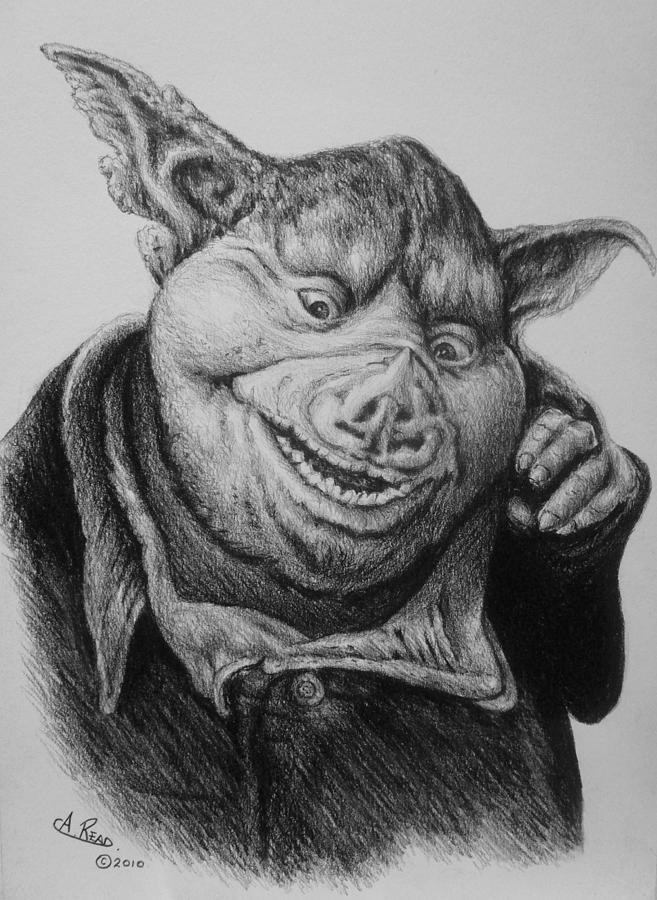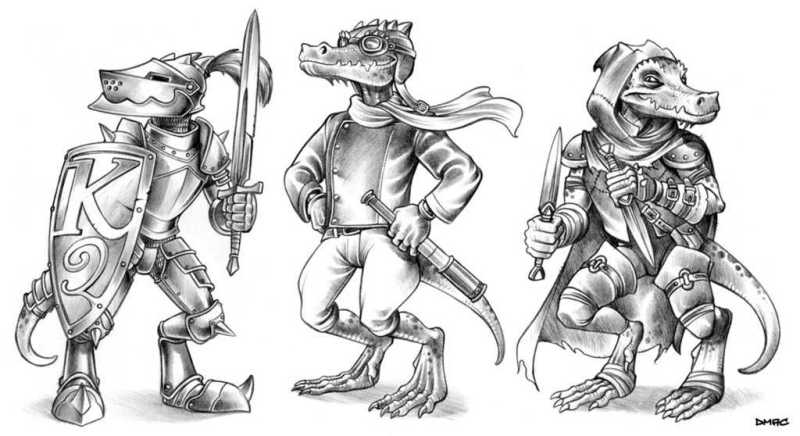In the Hills and Mountains
From Giants as large as hills to Dwarves that reside beneath them, from Goblins and Hobgoblins scavenging the land for food to knockers deep in mines and Ogres in their abandoned estates, the Faeries of the hills and forests are as old as the bones of the Earth.
Dwarves (Family: Brevihominidae)
Dwarves are a diminutive race of Faeries that live in mountains and deep forests. Since they are primarily subterranean by nature, most avoid bright light (including sunlight), and some are even nocturnal.
Young Dwarves have a harsh, stone-like appearance that supports the theory they are carved from rock rather than born. As Dwarves become older, their skin becomes finer and more polished, sometimes resembling marble. Dwarves can shift form to become a Tree stump or stone, but if you look closely, you may be able to see their features in the wood or rock.
While the Elves appear to behave like the aristocracy of Faerie, idling away their days, Dwarves are hard workers with strength far greater than their size. Like Elves, however, they value bravery and loyalty and will punish those that ridicule or trick them.
Mountain climbers will sometimes find rings or other odd items along ledges or in shallow caves. They may also occasionally hear the clanging of these eternal laborers.
Master craftsmen, Dwarves can forge any metal and make fine weapons that will never lose their sharpness. Because they lead very long lives, the death of other, less enduring things is a continuous source of sadness and many of their creations are an attempt to improve on nature.
Giants (Family: Gigantidae)
These lumbering brutes hibernate for most of their adult lives, sleeping for so long that their backs become densely forested. That, coupled with the fact that they can grow as large as hills and are often indistinguishable from the landscape, means it is entirely possible for a person to walk across the back of a sleeping Giant and not even know it.
Highly territorial, Giants seldom form attachments. Although normally placid, they can turn quite violent of roused. When Giants take over new terrain, they will raze it to the ground, creating forest fires as a means of staking their claim. Giant territory is marked by unusual land formations: lakes in the shapes of footprints, trees knocked over without apparent cause, hills made entirely of dung and boulders strewn where they were hurled in sport or fury.
Goblins (Family: Adentidae)
Malicious and grotesque, a single Goblin is a nuisance, but in large numbers they can be quite dangerous. Goblins travel in roving bands that scavenge for food and hunt smaller prey. They make their homes in rocky outcroppings, caves, or even in ditches along the sides of roads.
Their pranks run from distasteful to depraved. The rare Goblin that is mischievous but good-natured is known as a Hobgoblin.
Most Goblin species are born without teeth. They must find substitutes, either the teeth of other Animals, or sharp objects like glass, rocks or metals other than iron.
There are many signs to look for if you suspect Goblin Folk are in the vicinity. Cats, Dogs and other small domesticated Animals going missing is a tell-tale sign, as Goblins will capture and eat them. Nightmares, especially of being chased, are another indication. For some reason, Goblins have this effect on Humans.
Certain types of Goblin species haunt battlefields where many soldiers have fallen. They soak their hats in the blood of the slain and in that of their own victims. Appropriately, they are called Redcaps.
Hobgoblins (Family: Amicidiabolidae)
Similar to Goblins in appearance, Hobgoblins, or Hobs as they are sometimes called, are a less malicious and more mischievous type of Faerie.
Friendly and sometimes even helpful, Hobgoblins still have a penchant for pranks that can range from annoying to infuriating. They are most fond of stealing trinkets and food, but they also enjoy tripping people and otherwise amusing havoc.
Like Goblins, Hobgoblins are scavengers, but unlike Goblins, they are solitary in nature and are never spotted in large numbers. It is unclear if they are a wholly different species from Goblins or merely the same species with a remarkably different disposition.
The mischievous Puck from William Shakespeare's Midsummer Night's Dream, identified himself as a Hobgoblin.
Many times, children and pets are blamed for this Creature's pranks and practical jokes. (Compare to Pixies)
Knockers (Family: Cavernahabentidae)
Also known as Kobolds, these enigmatic Creatures most commonly live in mines, mimicking the sounds of miners by tapping against the rock walls. It is said that they do their own mining at night when all the Humans have departed, but since they do not appear to craft metal, it is unclear what they are seeking under the ground.
Knockers are valued because they will warn miners of impending disaster (like collapses) by pounding on the walls. Sometimes the pounding sounds like it's coming from all directions alluding to a large number of Creatures, but this may merely be a trick of the acoustics.
Knockers cannot abide whistling and swearing. They will cause small showers of stones to fall on anyone performing these actions or in other ways disrespecting them.
Outside of mines, Knockers can be found in wells, caves and sometimes even in basements. (Compare to Brownies)
Ogres (Family: Stultibrutidae)
Ogres often trade on their strength, despite having better than average intelligence. They live as scavengers, bullying Humans and other Faeries into giving up their food, land, and wealth. Luckily, Ogres are both vain and lazy, attributes that often lead to their downfall.
Descended from Giants, Ogres are quite large in their natural form. They have the ability to shape-shift into Creatures both smaller and larger than themselves, but they then share the strengths and limitations of each. In order to shift into another form, the Ogre must have previously seen the Creature it wishes to become and it can only remain in that guise for a limited duration. In the fable Puss in Boots, written in the 18th century, the clever Puss outsmarts one nasty, conniving Ogre by convincing him to turn into a Mouse.
Ogres are solitary Creatures and it would be highly unusual to see more than one in the same place. Abandoned mansions, factories,hospitals and other massive, isolate buildings may house Ogres. They find such places more to scale for their size.






No comments:
Post a Comment